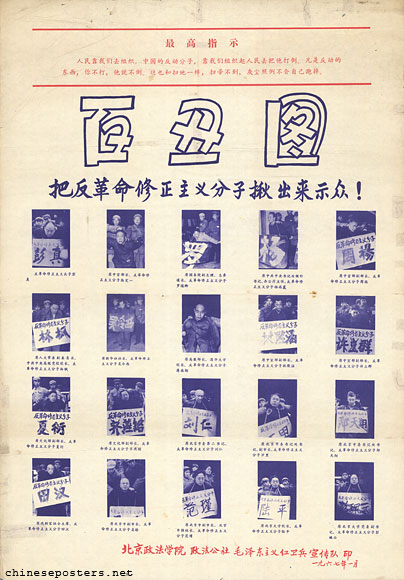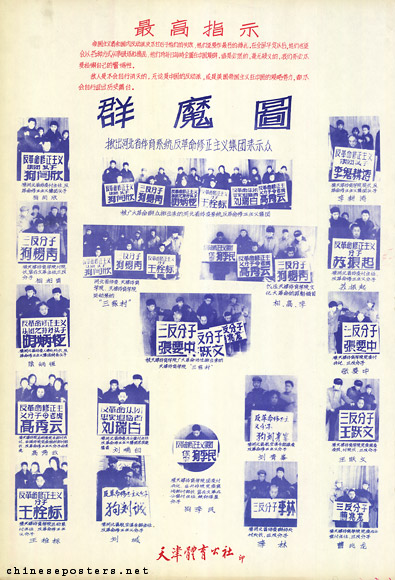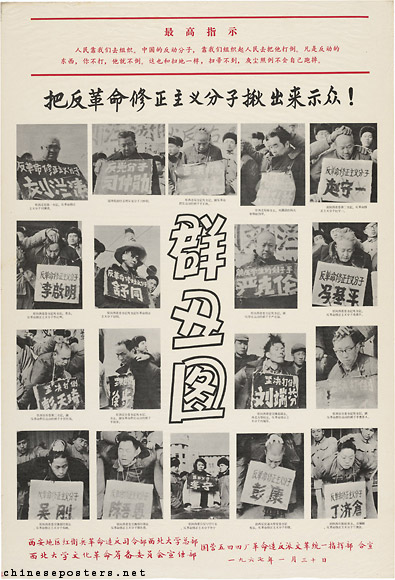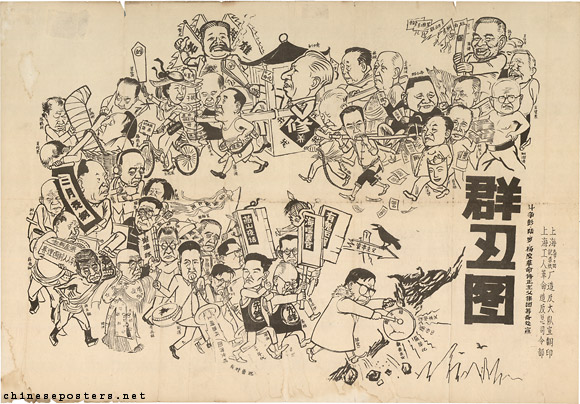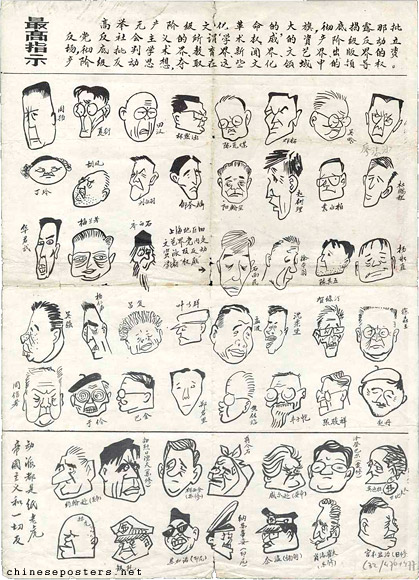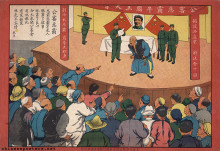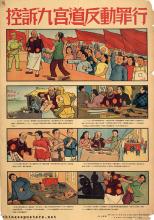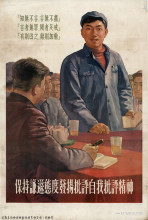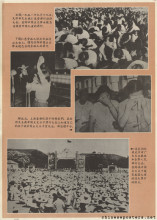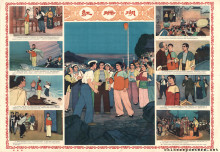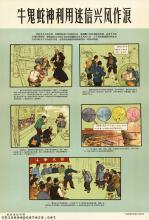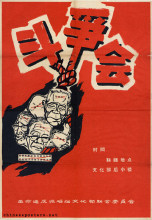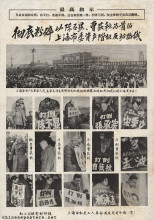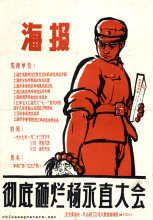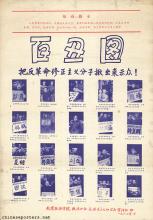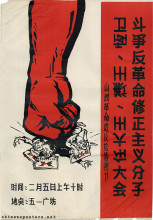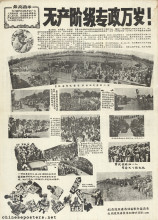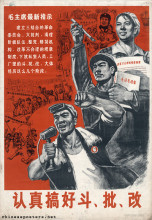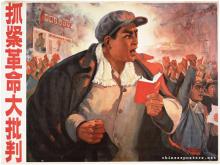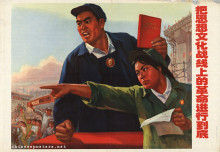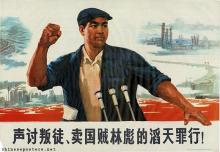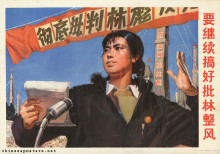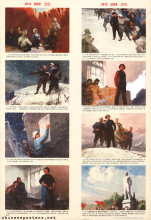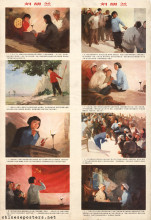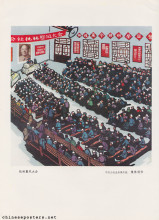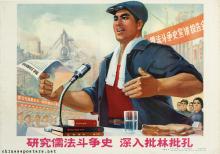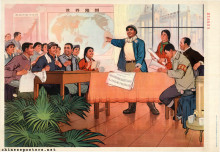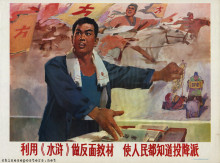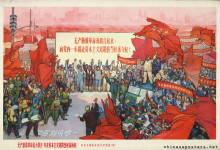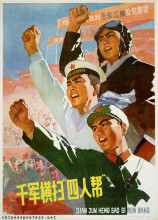One Hundred Clowns--Drag out the counterrevolutionary revisionist elements and expose them!, 1967
’Monsters and Demons’ (牛鬼蛇神, niugui sheshen) was the term used to vilify specialists, scholars, authorities and ‘people who entrenched themselves in ideological and cultural positions’ during the Cultural Revolution. After the publication of the editorial "Sweep Away All Monsters and Demons" in People’s Daily on 1 June 1966, and after it was rebroadcast and reprinted, the Red Guards started a huge purge which swept the country, ‘dragging out’ and prosecuting all those ostensibly fitting the description. The editorial was written under Mao Zedong’s order by his political secretary Chen Boda, one of the members of the Central Cultural Revolution Group headed by Jiang Qing.
Niugui sheshen (cow monsters and snake demons) was the most recurrent supernatural metaphor used during the Cultural Revolution. It was rooted in Buddhist demonology and an especially potent weapon to demonize one’s opponents. Other terms included ‘devils’ (魔鬼, mogui), ‘demons’ (鬼怪, guiguai), ‘monsters’ (魔怪, moguai), ‘vampires’ (吸血鬼, xixue gui), and ‘apparitions and spectres’ (wangliang guimei). All these ‘evil spirits’ could be identified with the ‘demon-exposing mirror’ (照妖镜, zhaoyao jing) of Mao Zedong Thought.
Once people were ‘dragged out’ as ‘evil spirits’, they were forced to wear caps, collars or placards identifying them as such, as the representatives of the ‘Hunderd Clowns’ in the poster above. Being ‘cow monsters’, they were imprisoned in what was generally called a ‘cowshed’ (牛棚, niupeng). This did not have to be a genuine stable; it could be a classroom, storehouse, dark room or temple. In the absence of legal procedures, the length of stay in the ‘cowshed’ could be ten days or ten years.
H.C. Chuang, The Great Proletarian Cultural Revolution - A Terminological Study (Berkeley:University of California Center for Chinese Studies, 1967)
Guo Jian, Yongyi Song & Yuan Zhou, Historical Dictionary of the Chinese Cultural Revolution (Lanham: The Scarecrow Press, Inc., 2006)
Yarong Jiang & David Ashley (eds.), Mao’s Children in the New China - Voices from the Red Guard Generation (London: Routledge 2000)
Kwok-sing Li (editor) & Mary Lok (translator), A Glossary of Political Terms of the People’s Republic of China (Hong Kong: The Chinese University Press 1995)
Li Zhensheng, Red-Color News Soldier - A Chinese Photographer’s Odyssey through the Cultural Revolution (London: Phaidon Press, 2003)
Lu Xing, Rethoric of the Chinese Cultural Revolution - The Impact on Chinese Thought, Culture and Communication (Columbia: University of South Carolina Press, 2004)
Elisabeth J. Perry & Li Xun, "Revolutionary Rudeness: The Language of Red Guards and Rebel Workers in China’s Cultural Revolution", Indiana East Asian Working Papers (July 1993), 1-17
Laura Pozzi, "The Cultural Revolution in Images: Caricature Posters from Guangzhou, 1966–1977", Cross-Currents: East Asian History and Culture Review No. 27 (June 2018)
Yan Jiaqi & Gao Gao (translated & edited by D.W.Y. Kwok), Turbulent Decade - A History of the Cultural Revolution (Honolulu: University of Hawai’i Press, 1996)
Yang Kelin (ed.), Wenhua dageming bowuguan [Museum of the Cultural Revolution] (Hong Kong: Dongfang chubanshe youxian gongsi, Tiandi tushu youxian gongsi, 1995) [in Chinese]
